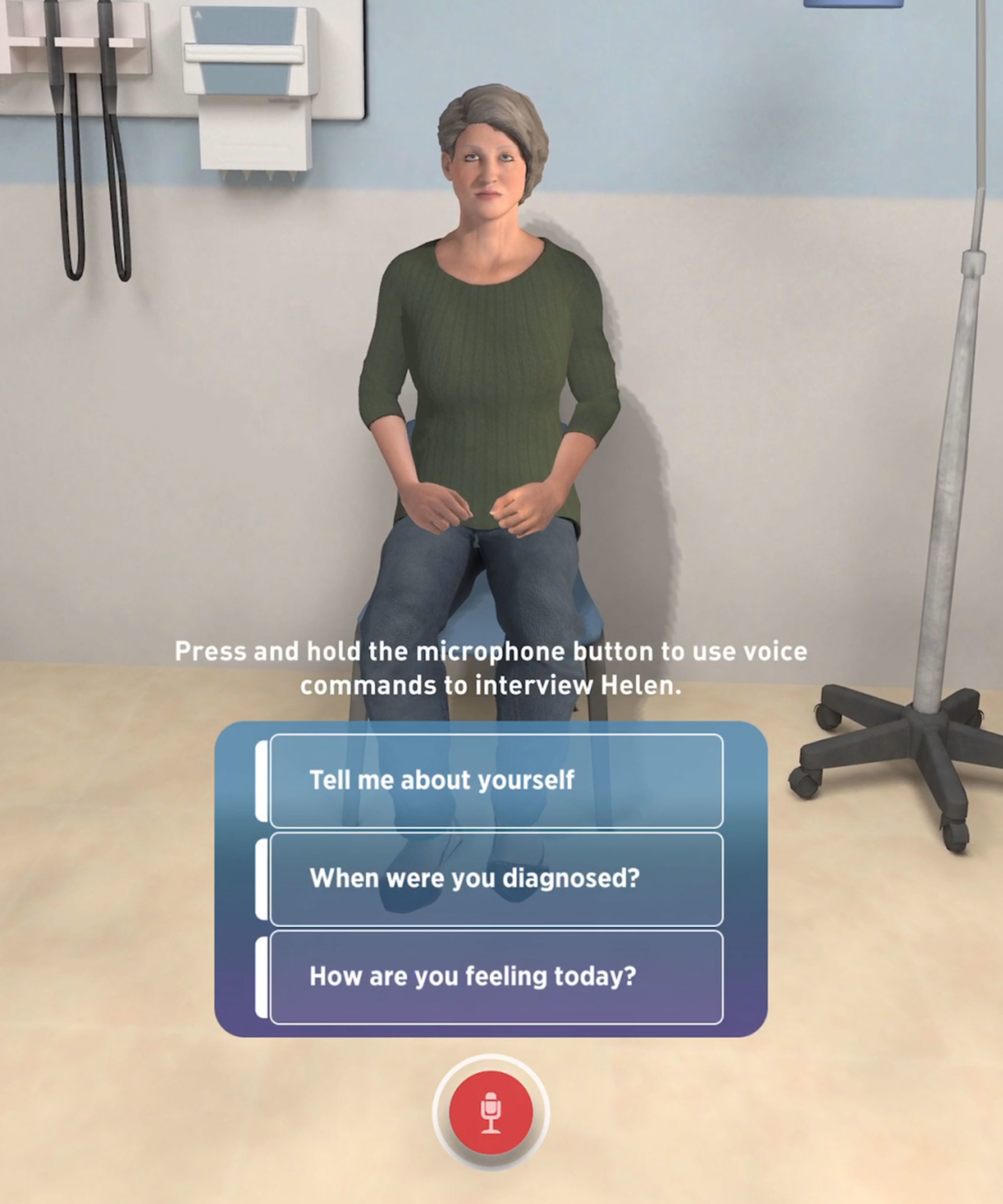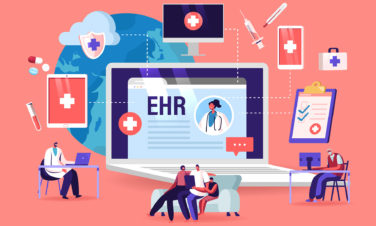Learning by doing is not a new concept—the theory has been around for centuries. It was expounded by John Dewey in the early 1900s and again in the 1980s by David Kolb with his theory of experiential learning.
Today, the value of learning through experience, rather than passively receiving information, is considered obvious—you don’t learn how to ride a bike by sitting in a classroom. However, new technologies such as virtual reality (VR) and augmented reality (AR) have allowed us to take the concept of experiential learning to the next level.
The immersive qualities of VR and AR can be used to create empathetic, learn-by-doing experiences that support a deeper level of understanding of the patient journey, disease states, treatment options, and procedures, which in turn can drive traffic, increase brand awareness and loyalty, and support other marketing initiatives.
Virtual and Augmented Reality
VR is a fully immersive experience that places the user in a 3D-generated, 360-degree environment. AR, on the other hand, blends 3D-generated projections onto the user’s real world. VR typically requires a specialized headset, but both can be experienced from mobile devices such as smartphones and tablets. Both technologies can transport your audience to any location you can imagine, even inaccessible ones such as inside a patient’s body at the cellular level. These state-of-the-art applications allow your audience to see, hear, and feel first-hand what the patient experiences on a level impossible with any other technology.
The Role of Empathy in Healthcare Marketing
Having an empathetic approach to marketing can be a powerful tool that builds patient trust and calms patient anxieties. In a world where information is everywhere and patients are taking more interest in researching their diseases and treatment options, projecting an image of perspective and understanding helps brands increase awareness and loyalty while educating their customer base. Research1 has shown that doctors who exhibit genuine empathy and effectively communicate with their patients have less malpractice cases, make fewer mistakes, and have patients who are more satisfied with their care and have better health outcomes.
Using VR/AR can help foster these high-quality interactions between patients and healthcare providers (HCPs). The immersive, experiential qualities of these new technologies allow caregivers and HCPs to not just observe but play an active role in learning about things such as disease progression and symptom development. This level of emotional engagement motivates and focuses HCPs on providing the best care for their patients, who now feel like they’re being heard, cared for, and understood.
Developing Empathy Using VR and AR
At their core, VR and AR use sensory stimulation—including visual distortions, audio effects, and tactile feedback—to replace or enhance the user’s reality.
Visual distortions manipulate a user’s ability to see. Visual blurs or dark spots can replicate degrading vision or indicate a struggle with concentration, while occluding tunnel vision can create distractions from the task at hand. VR has given doctors and caregivers a chance to experience the frustrations and hardships that a person with an ocular disease, like age-related macular degeneration, must go through every day (Figure 1). It provides a perspective that was not achievable before this technology.

Audio effects can be used to help emphasize moments of impact or the time it takes to perform tasks. These effects can also be used to increase the user’s stress level and mimic painful symptoms, such as heavy rhythmic tones to signal the onset of a migraine.
In VR/AR, haptic feedback adds another dimension to the simulated world, increasing the level of immersion and presence. Haptic feedback simulates the sense of touch. An example you’ve probably experienced is your cell phone vibrating when you get a text or call.
In VR, haptic feedback is usually transmitted through handheld controllers but can also take advantage of specialized wearable devices, such as haptic feedback vests, jackets, pants, and even shoes. These devices allow VR/AR experiences to simulate physical symptoms of disease, such as arthritic pain or unsteady hands (Figure 2), as well as add tactile elements to simulations, like the impact of a surgical tool as it touches bone.

This sensory stimulation is at its strongest when paired with meaningful storytelling. Humans are storytellers by nature. Stories are easier to remember because they stimulate human emotions. Pairing compelling visuals and sensory stimulation with an emotional story and an experiential strategy creates an impactful and memorable experience in a way no other technology can.
Support Diagnosis and Treatment
When HCPs are emotionally invested in their patients, they are more likely to diagnose and treat issues. This emotional investment can be developed by giving HCPs greater knowledge of diseases, their underlying causes, and how symptoms can present.
The immersive qualities of VR/AR allow HCPs to get a literal inside look at how diseases affect different parts of the body. Organ damage such as failing kidneys and inflamed GI tracts can be recreated in realistic detail, giving HCPs a quick and visceral connection to their patients and their need for treatment (Figure 3).

In another example, HCPs can be placed inside of specialists’ offices and given simulated diagnostic tools to view interactive 3D models at various stages of disease progression. These techniques can raise awareness and give HCPs more information about how diseases present and when to treat them.
Experience Disease Progression
Imagine strapping on a VR headset and seeing the world through a patient’s eyes. As their eyesight fails, spots and blurs begin to appear in your vision. As migraines overpower them, lights become powerfully bright and tunnel vision takes over. As arthritis begins affecting a patient’s hands, you feel your controllers shake and strain as red flashes and rushing heartbeats play around you. These are powerful experiences that stay with learners for much longer than any textbook or video and help caregivers and HCPs remember how important treating and caring for patients are and the painful consequences of letting diseases go undiagnosed and untreated.
HCPs gain an emotional connection to their patients because they have experienced the symptoms, not just read about them, and are inspired to improve their patients’ quality of life.
Engage with Simulations
Simulations of procedures can also be beneficial to HCPs. Having VR/AR practice tools to review surgical procedures or proper usage of medical devices gives HCPs a “just in time” training resource that’s easily updated and accessed. Unlike instructions for use (IFUs) or instructional textbooks, VR/AR simulations can explore alternate techniques for unique anatomy and case use, as well as include “pearls of wisdom” from experts and KOLs. By engaging with these practice tools in a hands-on manner, HCPs can describe procedures and medical device usage in more detail and answer questions more authentically, which can help to ease patient concerns and build trust in the HCP and the procedure or device.
Draw Attention at Events
VR/AR tools are also powerful ways to draw attention and engagement at shows, demonstrations, and Congress events. When being in-person isn’t an option, these tools can also be easily converted into virtual trade show booths and eDetails, allowing companies to spread their messaging as easily as asking customers to download an app on their smartphone or tablet. Using virtual trade show booths or AR detailing allows you to recreate large-scale events in a user’s living room. HCPs can use voice commands to visit with virtual patients, giving them a sense of human connection and presence in a virtual setting (Figure 4).

Innovation for the Future
Healthcare providers who take part in empathy-driven, learn-by-doing experiences gain fresh reminders of their patients and the challenges they face, inspiring them to drive innovation and improve the patient experience. Experiential learning driven by empathetic connections doesn’t just educate, it inspires a call to action.
All images © 2020 Tipping Point Media. All rights reserved.








